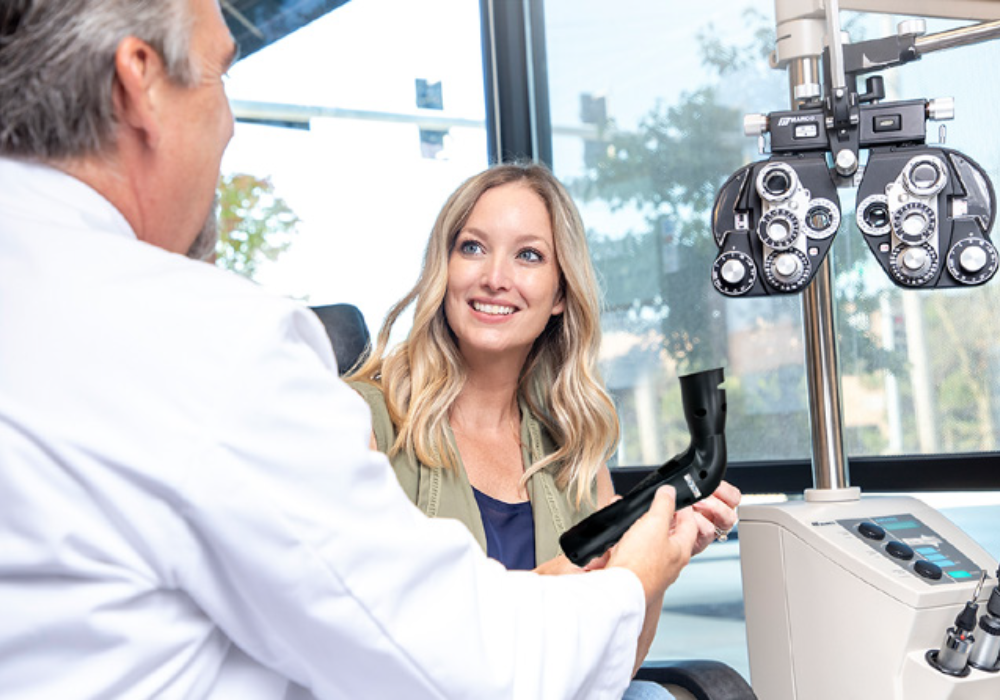Grow Your Practice By Offering More Specialized Care
Posted by EyePromise on Sep 14th 2023
There are many ways to begin growing your eye care practice. One way is to offer more specialized patient care like becoming an occasional dry eye or macular health center, a sports vision clinic, or putting a focus on patients with blood sugar control issues. In an article for Review of Optometric Business, Melissa Richard, OD, MS, shared how she turned her passion for positive patient outcomes into year over year growth with care protocols specific to blood sugar control issues.
Understanding the Opportunity to Help
Dr. Richard began to notice that more and more of her patient base was struggling with blood sugar control issues. According to the Center for Disease Control and Prevention (CDC), over 37 million Americans have these issues, and this accounts for just under 8% of Richard’s patient base. Of that percentage, a third of them already have vision-threatening issues due to uncontrolled blood sugar. In fact, blood sugar control-related ocular issues are the leading cause of vision loss in working aged adults in the U.S.
Eye doctors are often the first to identify patients with blood sugar control issues because of the damage it can cause within the eyes. Once the damage is done, there’s no going back. That’s why Dr. Richard decided to take action for her patients. She did this by bringing in more focused protocols, including equipment purchases, prescription expansion, and a more intensive appointment procedure for patients with blood sugar control issues. These protocols have grown this focused portion of her practice by 5% over last year already.
Understand How Blood Sugar Affects Refraction

An important step in this process for Dr. Richard was to understand how blood sugar control can impact refraction. When glucose enters the lens, it converts to sorbitol and can build up and cause lenticular thickening, which can lead to refraction changes. Knowing this, Dr. Richard will ask patients with blood sugar control issues to come back in 3-4 weeks with the promise of getting their blood sugar under control.
This delay in remeasurement allows the body time to regulate and potentially correct any glucose-related refraction errors. If the patient’s prescription still needs adjusting at that follow-up appointment (and the patient got their blood sugar in check), she makes the changes. Dr. Richard also had her staff start asking patients for their blood sugar levels, both after fasting and not, as well as contact information for primary care providers and endocrinologists.
Connect with Primary Care Providers
It’s always important for eye care professionals to work with primary care providers, but it’s even more important for patients with blood sugar control issues. When Dr. Richard first got started, she stopped at all the primary care offices near her office and left business cards for referrals and even made flyers that stated what kinds of care her practice offered. But that wasn’t the most important thing she did in her mind.
“…the most important thing we did to get referrals from primary care providers was to send letters promptly regarding the patient’s [eye health related to their blood sugar control issues]. We have a template, which we could quickly complete, and fax to their primary care and/or endocrinologist immediately after their exam."
Invest In the Right Equipment
Dr. Richard knew she would need additional equipment to better care for her patients with blood sugar control issues. She chose to invest in Visionix OCT, Optos California, OptoMap, and RETeval ERG devices for more comprehensive retinal imaging. This helps her tell patients a more thorough story about their eye health.
Beyond identification tools, Dr. Richard invested in solutions for patients with blood sugar control issues. Specifically, she began offering EyePromise® DVS, a daily eye health nutraceutical designed to support vision in relation to blood glucose levels. Its proprietary blend includes ingredients like Pycnogenol, resveratrol, and grapeseed extract, all aimed at promoting blood vessel health deep within the eye.
The EyePromise Zx Pro™
Another tool that can be helpful when expanding your practice offerings is the new macular pigment optical density (MPOD) measurement tool called the Zx Pro. Using the clinically proven method of heterochromatic flicker photometry, this portable, intuitive device makes it easier than ever to measure this critical biomarker for blood sugar control issues, age-related eye health issues, and even cognitive concerns.
In a self-guided, 2-minute, monocular exam, patients receive a numerical score to quantify their eye health, including blue light protection and visual functions like contrast sensitivity, glare recovery, and light sensitivity. The Zx Pro’s sleek design allows you to bring it outside of your testing lane and into the exam room – or wherever you’d like to test patients!
Learn more about the new Zx Pro.
Know How to Bill for These Services
Offering more specialized care often means longer consultations with patients. Dr. Richard stressed the importance of understanding how to bill for these services accurately, billing by time using 99xxx codes for office visits. While most patients use their vision plan benefits for a comprehensive exam, Richard has her patients with blood sugar control issues come back and use their medical insurance. This helps reduce any hiccups on the insurance end.
Demonstrate the Importance of Compliance and Routine Appointments
When it comes to patients with blood sugar control issues, one of the most difficult hurdles is getting them to understand the imminent risk of vision loss and the importance of staying compliant with therapies. Dr. Richard uses the optomap to help show patients the state of their retinas. “Seeing what I’m looking for makes it more real to them,” Richard explained. “I’m also excited about the RETeval because it gives the Risk Assessment score, something for the patient to keep track of and work on lowering their risk.
Another Number to Track
The Zx Pro also provides a score for patients and doctors to keep track of as they work on lowering their risk. Almost all EyePromise products come with a 6-month MPOD guarantee, meaning that if patients take products like EyePromise DVS compliantly, their MPOD score will go up or they get their money back. Learn more about MPOD measurement.
Getting the best patient outcomes is a team effort – from eye doctors to staff to primary care providers to patients. When working together with the right tools like EyePromise DVS and the Zx Po, we can protect and enhance vision in patients with blood sugar control issues.



